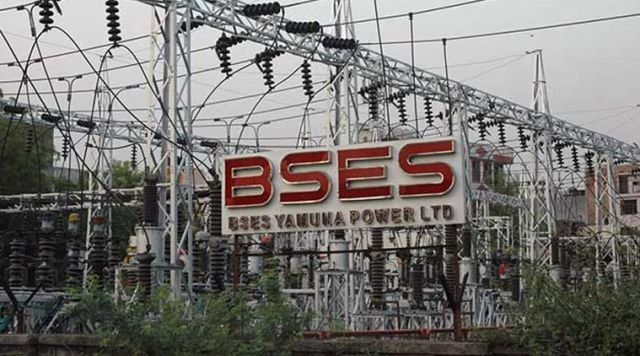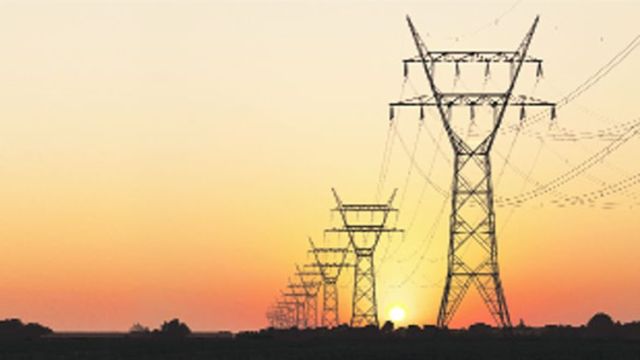
by admin | May 25, 2021 | Corporate, Economy, News
 New Delhi : With rains continuing to be elusive, peak power demand in Delhi broke all records on Tuesday to breach the 7,000 megawatt (MW) mark and touch the high of 7,016 MW a little before 3.30 p.m., Delhi electricity distribution company (discom) BSES said.
New Delhi : With rains continuing to be elusive, peak power demand in Delhi broke all records on Tuesday to breach the 7,000 megawatt (MW) mark and touch the high of 7,016 MW a little before 3.30 p.m., Delhi electricity distribution company (discom) BSES said.
A BSES statement said that Tuesday’s figure, which broke the previous record of 6,998 MW created on Monday, marks an increase of over 250 per cent over the peak power demand of 2,879 MW in 2002.
“This is the 11th time this year Delhi’s peak power demand has surpassed last year’s high of 6,526 MW,” it said.
“The peak power demand in BSES Rajdhani Power Ltd’s (BRPL) area of south and west Delhi, today (Tuesday), clocked 3,081 MW and 1,561 MW in BSES Yamuna Power Ltd’s (BYPL) area of central and east Delhi.
According to the discom, Delhi’s peak power demand is substantially more than that of several cities and states.
“It is more than the power demand of Mumbai and Chennai put together and thrice than that of Kolkata,” it said
“The fact that the city’s power demand is consistently crossing the 6,500 MW mark shows the robustness of the capital’s distribution and transmission system, which has been able to measure up.
“This has been possible on the back of an advanced distribution network and massive reduction in AT & C (aggregate technical and commercial) losses,” it added.
The BSES discoms have invested substantial resources to strengthen the network for taking additional power load during summer months, the statement said.
“During the year, BSES discoms have invested heavily to further improve and augment this network by adding new grid substations, power transformers, laying new feeders, shifting overhead lines underground and setting-up new distribution transformers among others,” it said.
“BSES discoms continued to invest heavily in the network and deployed a capex of over Rs 900 crore during FY 2017-2018. At the back of several technological deployments, capacity addition is of over 900 MVA (mega volt ampere),” it added.
To meet the unprecedented demand, the two BSES discoms have taken measures like long-term power purchase agreements (PPAs) and banking arrangements with various states, as well as with neighbouring Bhutan.
—IANS

by admin | May 25, 2021 | Business, Corporate, Corporate Buzz, Emerging Businesses, Investing, Medium Enterprise
 New Delhi : In a move to promote energy efficiency, Delhi power distribution company (discom) BSES on Monday announced an air conditioner (AC) replacement scheme which will allow consumers to save up to Rs 7,500 annually depending on the type of AC.
New Delhi : In a move to promote energy efficiency, Delhi power distribution company (discom) BSES on Monday announced an air conditioner (AC) replacement scheme which will allow consumers to save up to Rs 7,500 annually depending on the type of AC.
A discom statement said the “AC Replacement Scheme” launched by BSES Rajdhani Power Ltd (BRPL) in partnership with leading AC manufacturers will enable consumers in south and west Delhi to exchange their old ACs with the new energy efficient rating “5-star rated ACs at a substantial discount of upto 47 per cent”.
“A similar scheme will also be launched soon for BSES Yamuna Power Ltd (BYPL) consumers of east and central Delhi,” the statement said.
“Under the scheme, 10,000 air conditioners (both window and split) of leading brands (LG/Godrej/Voltas) are on offer on a first-cum-first-serve basis. A domestic consumer, residing in south and west Delhi, will be eligible to buy a maximum of 3 ACs against a unique CA number.
“Besides the substantial discount on the energy efficient AC, a consumer can save upto Rs 7,500 annually on the running costs of a split AC and upto Rs 6,500 on a window AC. A consumer can recover the cost of the AC in about 3 years,” it said.
To avail the scheme, eligible consumers have to call the BRPL helpline numbers 19123/ 39999707 or visit the discom divisional office and get their name and CA number registered.
“They will be contacted by the respective officials of the AC company through their empanelled vendors to take the enquiry forward,” BSES said.
Announcing the scheme, a BSES spokesperson said: “The initiative envisages saving the energy consumed by consumers, which will in turn lead to an eventual reduction in the energy purchased by BSES.
“The expected savings in the power purchase costs are envisaged to fund the discount being offered, thereby making this initiative a sustainable one.”
—IANS

by admin | May 25, 2021 | Corporate, Corporate Buzz, News, Politics
 By Biswajit Choudhury,
By Biswajit Choudhury,
Bhubaneswar : A private electricity distribution company (discom) is scripting a remarkable story of cutting its aggregate technical and commercial (AT&C) losses in rural Odisha, which remains one of only two states not to have joined the Centre’s Uday debt restructuring scheme for the hugely indebted Indian state discoms.
Feedback Energy Distribution Company (Fedco), owned by Gurgaon-based Feedback Infra, has successfully achieved an average 23 per cent reduction of AT&C losses in the four years it has been operating in Odisha. For a discom that operates in an area that is 90 per cent rural, this is the steepest-ever reduction in AT&C losses achieved in the country, it claims.
“We have reduced AT&C loss to the extent of 18-28 per cent in areas with 90:10 rural urban combine in the four divisions that we have been operating in four years,” Managing Director Devtosh Chaturvedi told reporters here during a tour of some areas in the company’s jurisdiction.
“The starting losses were in the range of 55-60 per cent and we have brought it down to 30-35 per cent. We have also doubled the consumer collections, meaning more revenues for the government,” he said.
In Odisha, Fedco operates in Khurda, Nayagarh, Puri and Balugaon divisions falling under the Bhubaneswar circle. The tour for journalists included a visit to the Puri Jagannath temple illuminated at night in all its splendour.
One of the four most sacred temple pilgrimages among Hindus, the “pandas” or priests at Jagannath make up the foremost community of Puri. They live in areas around the temple and used to be among the major defaulters on electricity bills before Fedco came on the scene, Chief Executive Samarjit Mohanty explained.
Behind Fedco’s success is its outreach to consumers through what it calls its “community engagement” division, which engages with “difficult” defaulters, even as the discom developed a reputation for quickly attending to outage complaints without needing to be bribed.
“From 91 most difficult villages in 2014 in Fedco areas… the number has now come down to 31,” Mohanty said, attributing community engagement as a key factor behind the turnaround in AT&C losses.
The AT&C reduction is the second-best by any power distribution franchisee after that by Torrent Power at Bhiwandi in Maharashtra, Chaturvedi pointed out.
In fact, Fedco’s entry into Odisha in 2013, following the devastation caused by cyclone Phailin, came with a massive act of community engagement, where the discom erected over 4,000 electricity poles to resume power supply in record time in the devastated rural areas.
Odisha is the only state with private franchisees engaged in rural power distribution, and was the first to adopt the privatisation model in distribution way back in 1995.
Fedco’s USP is its record in bridging the rural-urban divide and taking up distribution in non-urban, “problem” areas. It is predominantly a rural utility with only 10 per cent area in urban segments.
“Most discoms are wary of the challenges in collecting dues in the rural areas. Instead, in these three years, Fedco has doubled its annual cash collection to nearly Rs 400 crore,” Chaturvedi said.
Fedco is a distribution franchisee of Odisha’s state-run Central Electricity Supply Utility (CESU) under the management-operator model. Here, while the entire capex investment is made by the government, the responsibility and accountability, including reducing AT&C loss, customer service and the introduction of new technology, rest with the private company.
Fedco has a customer base of over 530,000, to which there is an annual increase of three per cent, or 15,000 consumers, company officials said.
Chaturvedi explained that Fedco’s record in turning around the gap between power purchase cost and revenue collection, as well as in providing customer satisfaction, had spread by word-of-mouth, enhancing its reputation in rural areas.
“In these three years, the power purchase cost in our four divisions has come down below the revenue collection. While our realisation per unit (RPU) of energy figure was 1.71 in 2013, it is now up at 2.71,” he said.
“The agreement with Fedco has resulted in substantial benefits in the way of assured revenue, better customer service, AT&C loss reduction and technical innovation through IT infrastructure,” said P.K. Sahu, Superintending Engineer, CESU, which is the government part of this public-private partnership (PPP).
As for the the Ujwal Discom Assurance Yojana (Uday) debt restructuring scheme the central government launched in 2015, Odisha (as also West Bengal) has not joined it because it is one among the few that has never subsidised discoms, Chaturvedi pointed out.
“The state will not feel the pinch of not joining Uday because it has never given subsidy to discoms. The power in Odisha is substantially hydro-electric, the generation cost of which is quite low in comparision,” he said.
(Biswajit Choudhury’s visit was at the invitation of Fedco. He can be reached at biswajit.c@ians.in)
—IANS

 New Delhi : With rains continuing to be elusive, peak power demand in Delhi broke all records on Tuesday to breach the 7,000 megawatt (MW) mark and touch the high of 7,016 MW a little before 3.30 p.m., Delhi electricity distribution company (discom) BSES said.
New Delhi : With rains continuing to be elusive, peak power demand in Delhi broke all records on Tuesday to breach the 7,000 megawatt (MW) mark and touch the high of 7,016 MW a little before 3.30 p.m., Delhi electricity distribution company (discom) BSES said.
